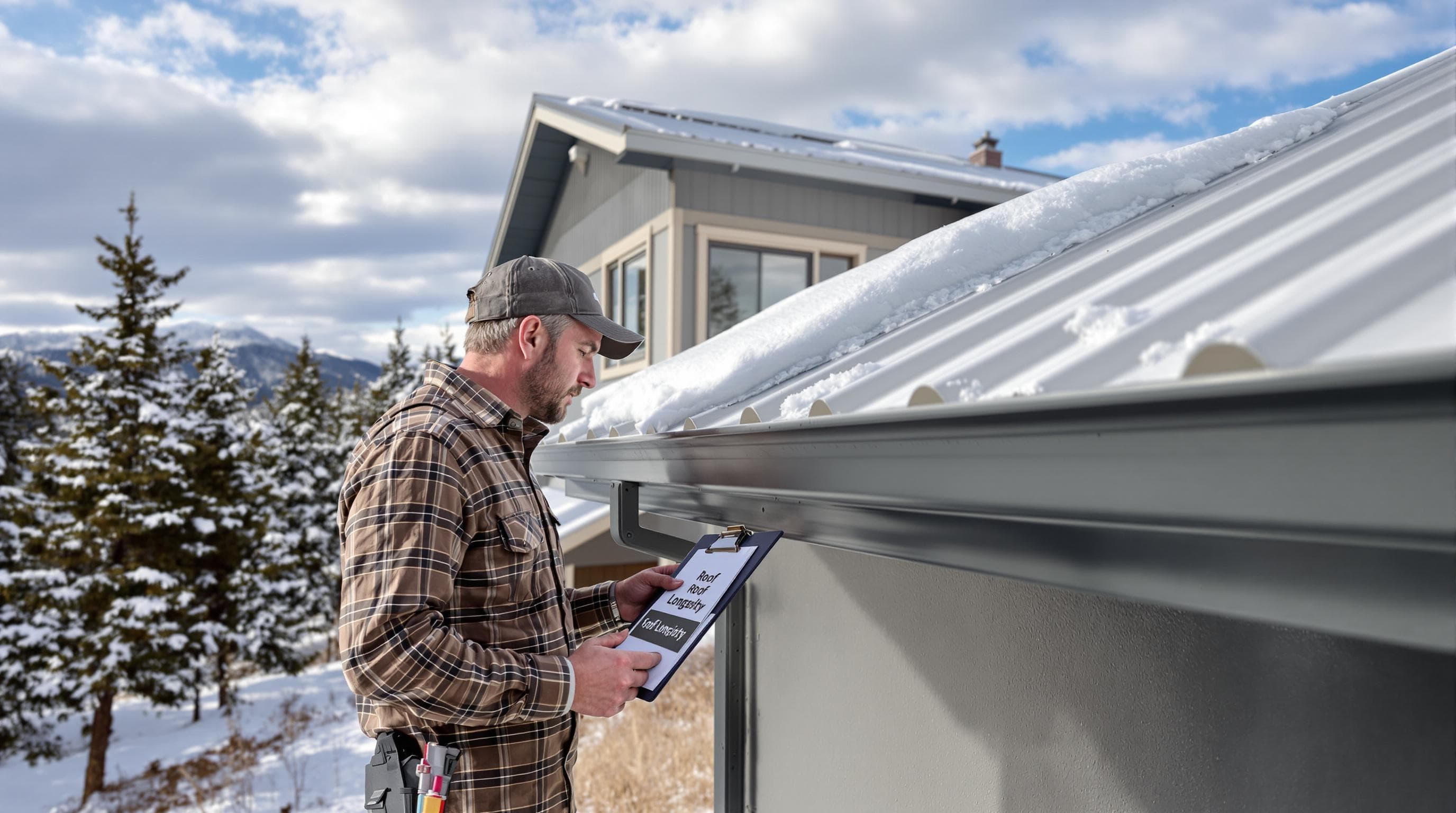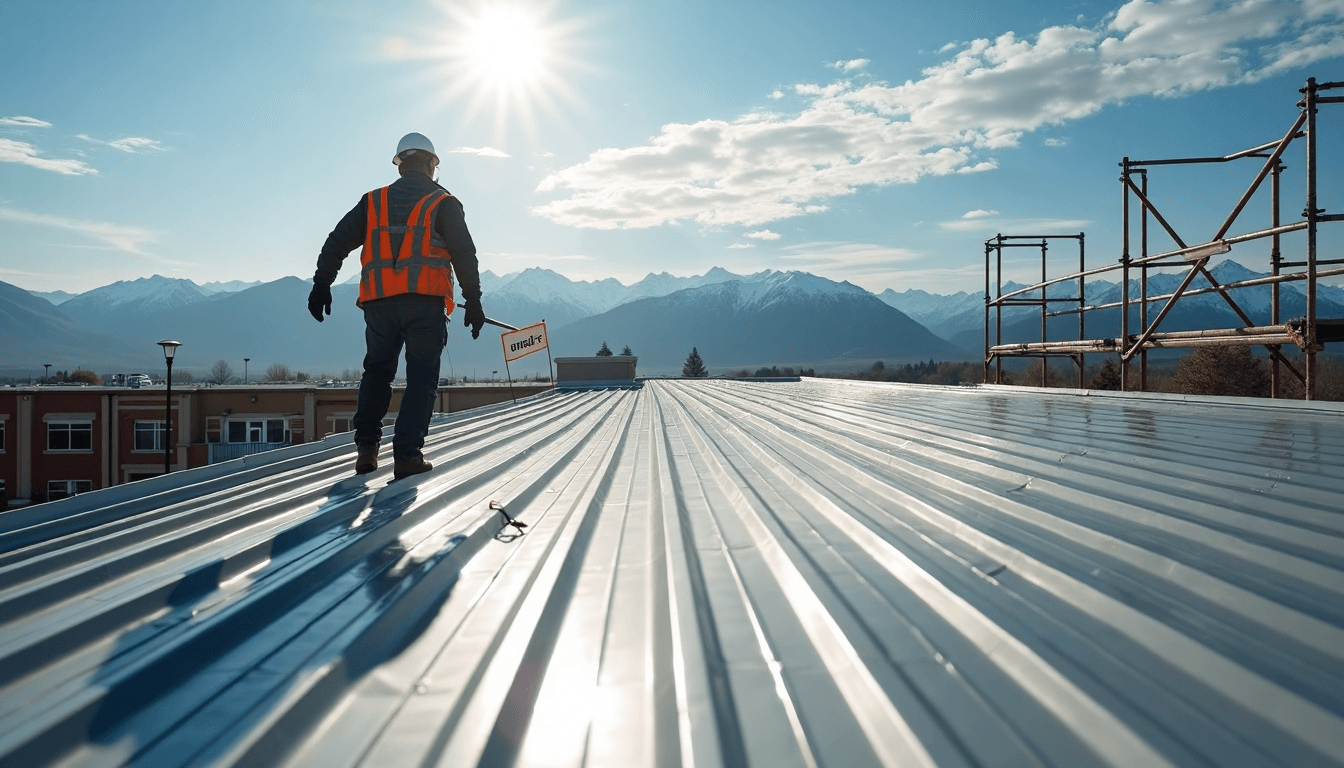Solar Roofing Considerations for Helena and Montana in 2025
Contact Us
Solar Roofing Considerations for Helena and Montana in 2025

Thinking about solar roofing for your Helena home in 2025 makes perfect financial sense. Many expect Montana’s brutal winters to kill solar panel efficiency, but reality looks far more promising. Modern panels not only thrive in cold weather, but you can cut installation costs by up to 30 percent through federal tax credits that last until 2032. The real surprise is that snow on your roof might actually help you generate more energy. Here’s how Montana’s climate, new building codes, and hidden incentives turn solar roofing into a smarter investment than most people realize.
Table of Contents
Quick Summary
| Takeaway | Explanation |
|---|---|
| Thorough Roof Evaluation is Essential | Before investing in solar roofing, homeowners should assess the roof’s structural integrity, especially if it is older than 15-20 years. This ensures long-term solar panel performance and prevents future issues. |
| Optimal Roof Orientation Maximizes Efficiency | A south or west facing roof with minimal shading and an ideal slope between 30 to 45 degrees is crucial for maximizing solar energy generation in Montana. |
| Take Advantage of Available Financial Incentives | Homeowners can significantly reduce costs through federal tax credits, state programs, and property tax exemptions for solar systems, making investments more financially appealing. |
| Understand Regulatory Requirements | Compliance with Montana’s energy codes, including designated solar-ready zones and potential mount standards, is essential for successful solar installations and long-term energy planning. |
| Consider Long-Term Financial Implications | Homeowners should evaluate energy cost savings, potential property value increases, and payback periods when planning solar investments for informed financial decision-making. |
Evaluating Roof Condition and Suitability
Before investing in solar roofing Helena MT, homeowners in Helena must carefully assess their roof’s structural integrity and compatibility. Solar panel installations represent a significant long term investment, making a comprehensive roof evaluation critical to ensure optimal performance and prevent future complications.
Structural Assessment and Age Considerations
The foundation of successful solar roofing begins with understanding your roof’s current condition. Research from solar experts reveals that solar panels typically last 25 to 30 years, which means your roof must be able to support this extended timeframe. Roofs older than 15-20 years require especially thorough professional inspection.
In Montana’s challenging climate, roofs must withstand extreme conditions including heavy snow loads, intense UV exposure, and potential hail damage. Local climate research emphasizes the critical importance of selecting durable roofing materials that can endure these harsh environmental challenges.
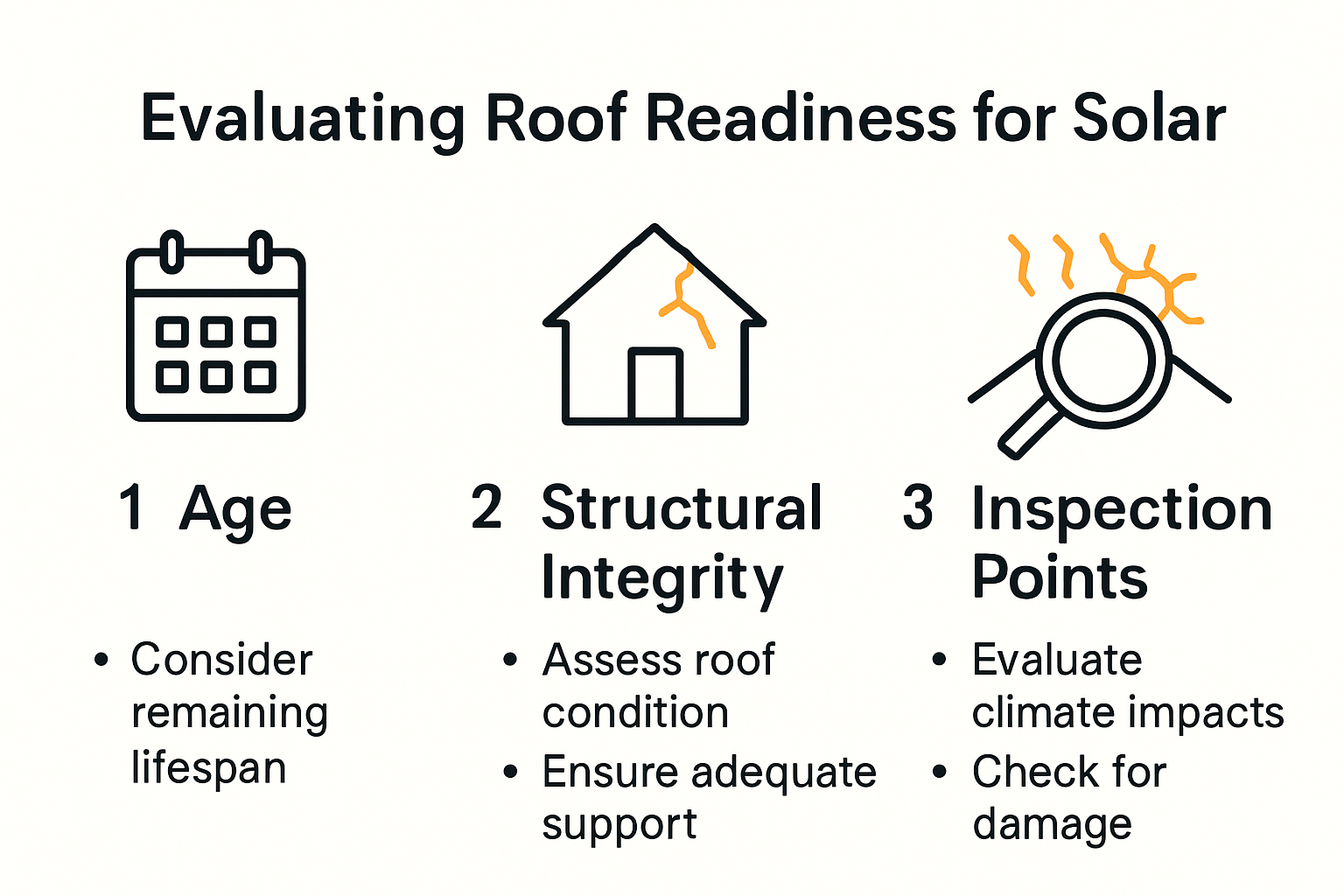
Warning Signs and Professional Evaluation
Identifying potential roof issues before solar installation can save significant time and money. Warning signs that indicate your roof might need repair or replacement include:
- Visible Damage : Curling or missing shingles
- Water Intrusion : Persistent leaks or water stains
- Structural Issues : Sagging or uneven roof surfaces
- Material Degradation : Worn or brittle roofing materials
Solar installation experts recommend a comprehensive professional inspection to thoroughly assess roof readiness. This evaluation should include detailed examination of:
- Roof substrate integrity
- Existing material condition
- Structural support capacity
- Potential repair or replacement needs
Preparing Your Roof for Solar Success
Preparing your roof for solar involves more than just structural assessment. Homeowners should consider roof orientation, pitch, and potential shading from nearby trees or structures. A roof facing south with minimal obstruction provides optimal solar energy generation.
Proper preparation might involve roof reinforcement, replacing aging materials, or strategically trimming surrounding vegetation. Working with experienced local professionals who understand Helena’s unique climate and solar potential ensures a smooth, efficient installation process.
Remember that investing in roof preparation now can prevent costly solar panel removals and reinstallations in the future. A well maintained, structurally sound roof is the essential foundation for a successful solar roofing project.
Here is a checklist table summarizing common warning signs and the recommended professional evaluation steps to help homeowners assess if their roof is ready for solar installation:
| Warning Sign or Evaluation Step | Present on Your Roof? (Yes/No) | Notes/Comments |
|---|---|---|
| Curling or missing shingles | ||
| Persistent leaks or water stains | ||
| Sagging or uneven roof surfaces | ||
| Worn or brittle roofing materials | ||
| Structural support capacity assessed | ||
| Roof substrate integrity checked | ||
| Potential repair/replacement needs identified |
Key Solar Installation and Design Factors
Successful solar roofing in Helena requires strategic planning and understanding of critical design factors that optimize energy production and system performance. Homeowners must consider multiple technical and environmental variables to maximize their solar investment.
Roof Orientation and Solar Efficiency
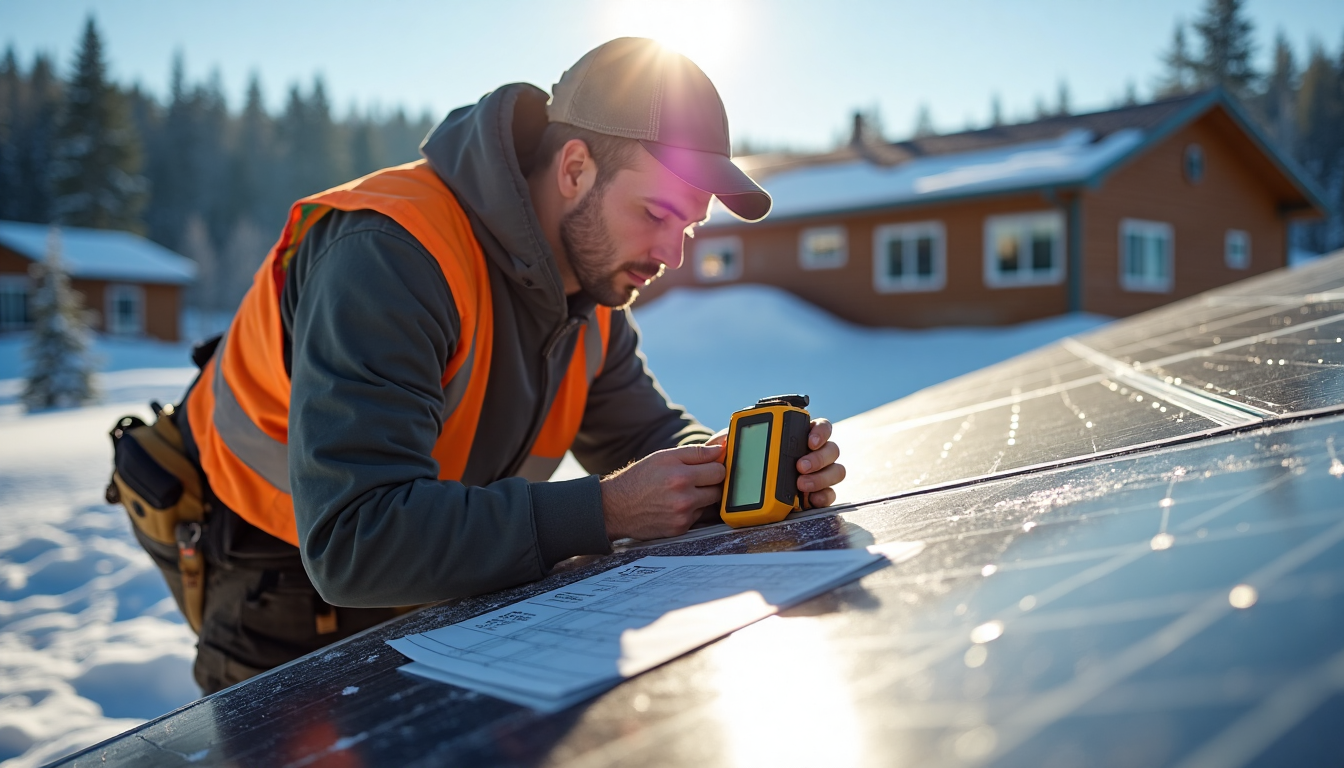
Research from solar experts indicates that roof orientation plays a pivotal role in solar panel performance. In Montana, south and west facing roofs receive the most direct sunlight, creating optimal conditions for solar energy generation. Ideal roof slopes between 30 to 45 degrees maximize solar panel efficiency, allowing maximum light absorption throughout different seasonal angles.
Shading represents another crucial consideration. Trees, nearby buildings, and local terrain can dramatically reduce solar panel output. Professional solar designers use advanced mapping technologies to evaluate potential shading impacts, ensuring precise panel placement and minimizing energy production losses.
Technological Advancements in Solar Design
Technological innovations are transforming solar installation strategies. Bifacial solar panels represent a significant breakthrough, capable of boosting energy yield by up to 30% through innovative light capture techniques. These panels uniquely capture both direct sunlight and reflected light—an especially valuable feature in Montana’s snowy environment.
Intelligent inverter systems and advanced battery storage technologies further enhance solar system reliability. Modern inverters can optimize energy conversion, while sophisticated storage solutions enable homeowners to leverage solar power during low sunlight periods or during grid interruptions.
Regulatory and Policy Considerations
Global policy trends increasingly mandate solar readiness in new construction, reflecting a broader commitment to renewable energy integration. In Helena, understanding local building codes, zoning regulations, and potential incentive programs becomes essential for successful solar roofing projects.
Homeowners should investigate available tax credits, rebates, and municipal incentives that can significantly offset initial installation costs. Montana offers various state and federal programs designed to encourage solar adoption, making 2025 an opportune moment for residential solar investments.
Careful design considerations extend beyond technical specifications. Aesthetic integration, structural reinforcement, and long term maintenance planning must all factor into comprehensive solar roofing strategies. Working with experienced local professionals who understand Helena’s unique climate and solar potential ensures a seamless, efficient installation that maximizes both energy production and property value.
Montana Climate and Local Building Codes
Navigating solar roofing in Helena MT requires a deep understanding of Montana’s unique climate challenges and complex building regulations. Homeowners and builders must carefully consider both environmental conditions and regulatory requirements to ensure successful solar installations.
Climate Considerations for Solar Performance
Montana’s climate presents both challenges and opportunities for solar energy production. Contrary to common misconceptions, cooler temperatures can actually enhance solar panel efficiency. Modern solar technologies are specifically engineered to withstand the state’s extreme weather conditions, including significant temperature variations and heavy snow loads.
The state’s unique geographical characteristics create interesting solar energy dynamics. While winter months reduce daylight hours, the reflective properties of snow can increase overall light capture. High altitude and relatively clear skies during winter and summer months provide excellent conditions for solar energy generation, making Helena an unexpectedly attractive location for solar investments.
Regulatory Framework and Building Codes
Montana’s statewide energy codes establish comprehensive guidelines for solar readiness in residential construction. As of 2025, new one and two-family dwellings with at least 600 square feet of roof area oriented between 110° and 270° of true north must include a designated solar-ready zone.
Key regulatory requirements include:
- Minimum Solar Ready Zone : At least 300 square feet of unobstructed roof space
- Electrical Provisions : Reserved panel space for future solar installations
- Roof Penetration Standards : Specific guidelines for potential mounting systems
Multi-story residential buildings with more than three floors above ground must additionally comply with commercial energy code portions of the 2021 International Energy Conservation Code (IECC), adding another layer of complexity to solar installation planning.
The following table summarizes the core building code requirements for solar-ready roofing in Montana as described in the section above:
| Requirement | Description |
|---|---|
| Minimum Solar Ready Zone | At least 300 sq ft of unobstructed roof space |
| Roof Area Requirement | >600 sq ft oriented between 110° – 270° of true north |
| Electrical Panel Space | Reserved panel space for future solar installations |
| Roof Penetration Standards | Guidelines for potential mounting systems |
| Additional Commercial Code Applies | For buildings with more than 3 stories above ground (2021 IECC portions) |
Practical Implications for Homeowners
Understanding these regulations requires careful navigation. Homeowners should work closely with local building authorities and experienced solar installation professionals who comprehend Montana’s specific requirements. This collaboration ensures not just compliance, but optimal system design that maximizes both energy production and regulatory adherence.
The intersection of Montana’s climate and building codes creates a nuanced landscape for solar roofing. While regulations might seem complex, they ultimately protect homeowners and promote sustainable energy infrastructure. Proactive planning, comprehensive site assessments, and partnering with knowledgeable local experts can transform these challenges into opportunities for efficient, compliant solar installations.
As solar technology continues to evolve, Helena residents stand at the forefront of renewable energy adoption, leveraging both technological innovation and progressive regulatory frameworks to create more sustainable residential environments.
Financial, Insurance, and Incentive Considerations
Solar roofing represents a significant financial investment for Helena homeowners, requiring careful evaluation of costs, incentives, and long-term financial strategies. Understanding the complex landscape of financial considerations can help homeowners make informed decisions about solar energy adoption.
Federal and State Solar Incentives
Recent federal policies provide substantial financial support for solar installations. Homeowners can claim up to 30% of their total solar installation costs as a federal tax credit through 2032, dramatically reducing initial investment expenses. Montana supplements these federal incentives with additional state-level programs designed to encourage renewable energy adoption.
Solar financial analyses reveal significant potential savings for Montana residents. Homeowners can benefit from multiple financial advantages:
- Tax Credit : 30% federal solar investment tax credit
- Property Tax Exemption : 100% exemption on solar system value for 10 years
- Low-Interest Financing : State-sponsored solar loan programs
- Potential Savings : Average of $6,390 in installation and long-term energy costs
Insurance and Risk Management
Insurance considerations play a critical role in solar roofing investments. Homeowners must understand how solar installations impact their existing property insurance and potential liability. Most standard homeowners insurance policies now include solar panel coverage, but specific riders or endorsements might be necessary to ensure comprehensive protection.
Key insurance factors include:
- Roof Warranty Preservation : Ensuring solar installation does not void existing roof warranties
- System Protection : Comprehensive coverage against damage from weather events
- Liability Considerations : Additional protection for potential system-related incidents
Long-Term Financial Planning
Solar market research indicates increasing financial attractiveness of solar investments in Montana. Equipment prices continue to decline, while financing options become more flexible and accessible. Homeowners should consider multiple financial perspectives:
- Energy Cost Savings : Projected reduction in monthly electricity expenses
- Property Value Enhancement : Potential increase in home market value
- Return on Investment : Typical payback periods ranging from 7-12 years
Strategic financial planning involves more than immediate cost considerations. Homeowners should evaluate their specific energy consumption, roof characteristics, and long-term residential plans. Consulting with local solar professionals who understand Helena’s unique market can provide personalized insights into the most financially advantageous solar roofing strategies.
The convergence of federal incentives, state support, and advancing solar technologies creates an unprecedented opportunity for Montana residents to transform their energy consumption while making sound financial investments. Careful research, professional consultation, and a comprehensive understanding of available financial tools can help homeowners navigate the complex landscape of solar roofing investments.
Frequently Asked Questions
What are the benefits of solar roofing in Montana?
Solar roofing can significantly reduce energy costs, increase property value, and take advantage of federal and state incentives. In Montana, modern panels perform well in cold weather and can even benefit from reflective snow, making solar a smart investment.
How does the climate in Montana affect solar panel efficiency?
Montana’s cooler temperatures can enhance solar panel efficiency. Additionally, the reflective properties of snow can help capture more sunlight during winter months, providing excellent conditions for solar energy generation despite harsh weather.
What financial incentives are available for homeowners considering solar roofing in Helena?
Homeowners can benefit from a 30% federal tax credit on solar installation costs, property tax exemptions for solar systems, and potential savings of over $6,000 on installation and long-term energy costs, making solar roofing more financially appealing.
Are there specific building codes I need to comply with for solar roofing in Montana?
Yes, Montana’s building codes require new homes to have designated solar-ready zones. This includes having at least 300 square feet of unobstructed roof space oriented between 110° and 270° of true north, along with specific electrical and roof penetration standards.
Ready for Solar? Secure Your Roof and Savings with Local Expertise
Many Helena homeowners are excited by the idea of solar roofing but worry about roof age, Montana’s harsh winters, and strict building codes. You might be concerned about long-term roof durability, maximizing energy efficiency, or qualifying for financial incentives. At Ellingson Roofing LLC, our experienced team addresses each of these challenges head-on, blending local knowledge with cutting-edge solar solutions. We carefully evaluate your roof’s condition and design systems that thrive in Montana’s unique climate so you never have to choose between peace of mind and energy savings.
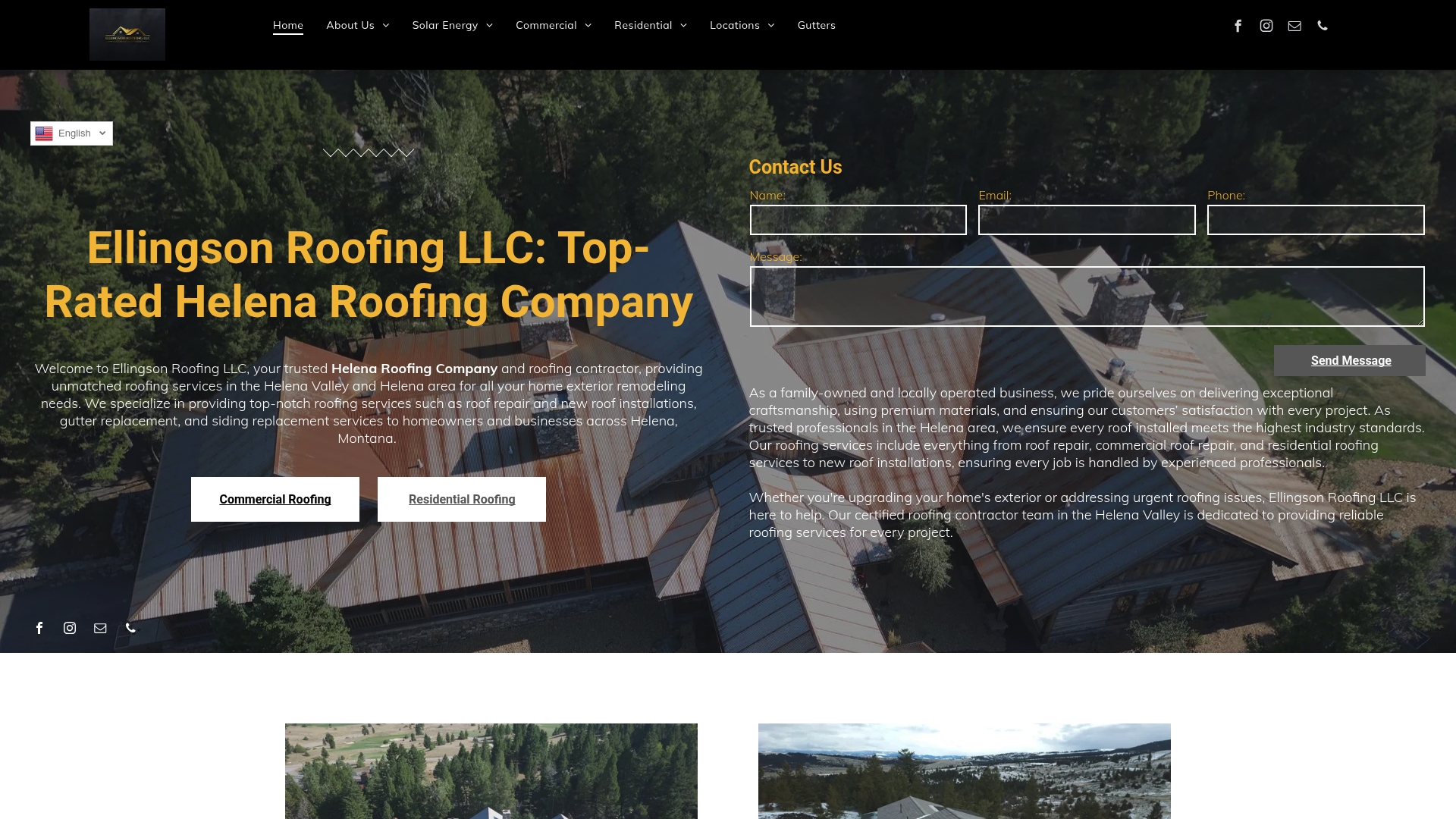
Let’s prepare your home for the future, starting with a detailed roof assessment and a plan that meets all current solar codes. Explore Ellingson Roofing LLC to see how our solar and roofing services can protect your investment, save you money, and power your home sustainably. Contact us now to book your free estimate and make the most of solar incentives before they expire.



